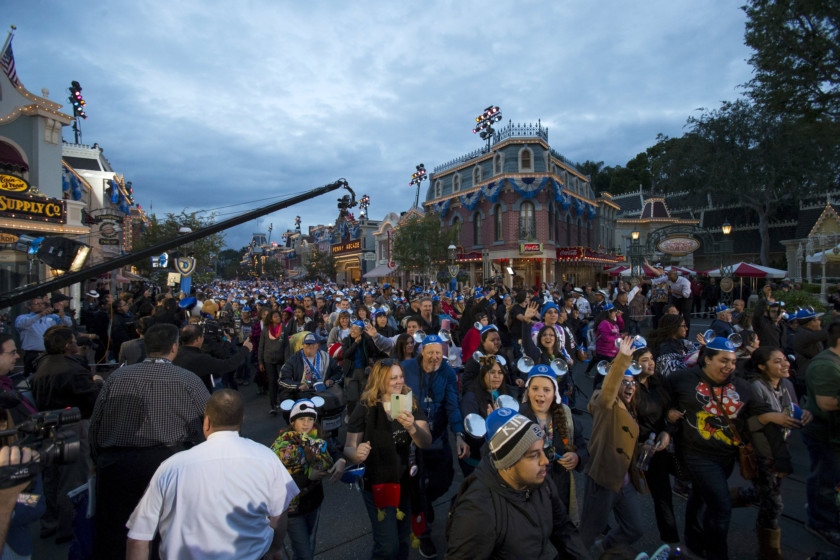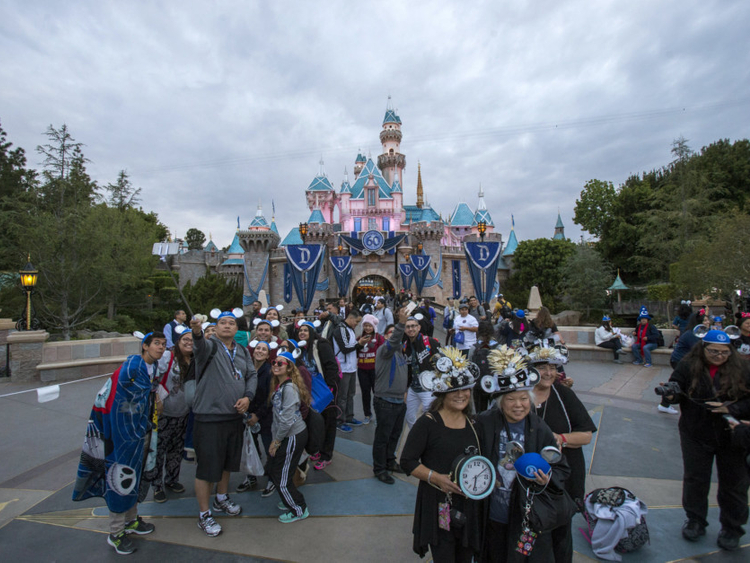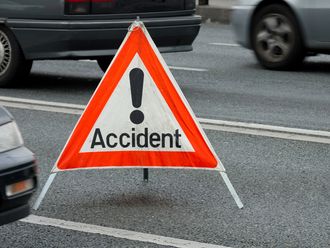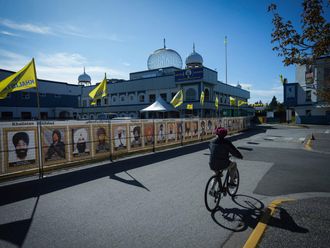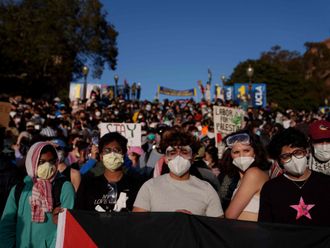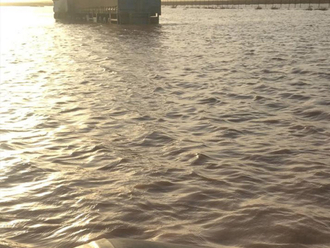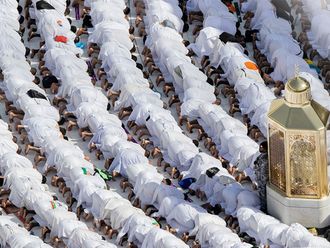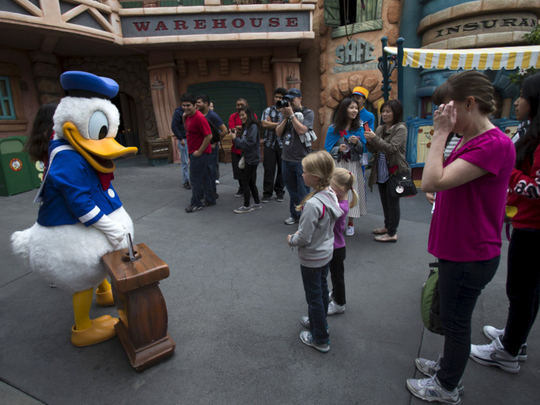
On a rainy spring night, Disneyland technology guru Chuck Davis paced along Main Street, overseeing a rehearsal of a new fireworks and light show for the park’s 60th anniversary celebration.
Projectors, lasers, fireworks and audio equipment were assembled to create a show that displays well-known Disney characters on the facade of Main Street buildings while music blares and fireworks rocket over Sleeping Beauty Castle. It is one of three attractions that have been revamped for the celebration.
But the music booming through the outdoor speakers was cutting in and out, and the animated images were not perfectly aligned on Main Street’s buildings.
“If it was easy, everyone would be doing this,” Davis quipped as he took notes of the glitches.
Sixty years after Walt Disney opened the Anaheim theme park powered largely by gas engines, electric motors, pulleys and gears, Disneyland is jumping into its seventh decade with heavy use of laser mapping, high-definition projectors, LED lights and infrared technology to tell Disney’s classic stories.
The heavy reliance on digital wizardry gives the park the flexibility to upgrade its attractions primarily by installing new software instead of having to tear out steel beams, mortar and plywood.
“It’s like a movie house. You just change the movie every once in a while,” said Bob Gurr, 84, one of Disney’s original imagineers and now a theme park consultant.
Disney officials declined to discuss how much they spent to upgrade its parade, fireworks show and “World of Colour” water spectacular for the celebration, starting Friday. But Walt Disney Co. reported investing nearly $1.2 billion (Dh4.41 billion) in its domestic theme parks and resorts in 2014, up from $1.14 billion in 2013.
The investment is likely to pay off, especially because Disney says it has no end date scheduled for the new attractions.
Disney executives say the company has long had a history of investing heavily in advanced technology to make park attractions dazzle the guests.
“In a way, it’s no different than when Walt opened Disneyland because he was using technology that was cutting edge at the time,” said Tom Staggs, chief operating officer of Walt Disney Co. “That has been our approach since the beginning.”
When the Burbank company needed to boost attendance at Disney California Adventure, it spent an estimated $1.1 billion to open Cars Land in 2012, stuffing computerised controls into things such as the vehicles in the Radiator Springs Racers ride. Attendance grew nearly 10 per cent in 2013 — better than the 1.5 per cent increase at neighboring Disneyland, according to an estimate by the accounting and engineering firm Aecom.
Hard-core Disney fans say they don’t mind the use of advanced technology in new attractions as long as the park does not alter older rides.
“Let them do some fancy new technology, but don’t disturb history,” said Steve Kwate, an annual Disneyland pass holder from Chicago.
Other theme parks have also turned to new digital technology to draw in visitors. Universal Studios Hollywood and Knott’s Berry Farm are launching their own attractions this summer that rely heavily on 3-D projections, infrared targeting systems and 360-degree screens.
“The theme park industry is so big,” Gurr said. “But they remain dog-eat-dog competitive.”
At the same time, park operators need to avoid the temptation to overuse digital gimmicks and wind up with an attraction that has no story or plot.
“At the end of the day, the emotion and experience has to come first and has to transcend that technology,” said Dave Cobb, vice president of creative development for Thinkwell Group, an attraction design company in Burbank.
In addition to the new fireworks show, Disneyland will launch the “Paint the Night” parade, which uses 1.5 million LED lights attached to floats and dancers, with the lights pulsating to the rhythm of the music. Infrared technology embedded in guests’ Mickey Mouse ears triggers lights in the ears that throb in sync with the parade music.
At Disney California Adventure, Disney imagineers created a new “World of Colour” show, hosted by actor Neil Patrick Harris and Mickey Mouse, whose images appear on sprays of water shot into the air.
At Disneyland, Davis began to piece together the technology for the new “Disneyland Forever” fireworks show 18 months ago. The show required the skills of about 100 workers, including pyrotechnic experts, sound engineers and computer technicians.
The most advanced technology employed in the fireworks show is the projection mapping used on Main Street buildings and other structures in the park, such as Sleeping Beauty Castle and the Matterhorn, Davis said.
Using lasers that scan the surface of the buildings and structures, technicians created a virtual 3-D landscape that was uploaded into a Disneyland digital server.
Special software was then used to programme projectors to cast moving images onto the surface of the buildings and attractions to create optical illusions, such as Winnie the Pooh bouncing off a ledge and the Matterhorn transformed into Mt. Wannahockaloogie from the movie Finding Nemo.
Twenty-five projectors have been installed throughout the park, some hidden behind the windows of Main Street buildings and others on turrets built in front of Sleeping Beauty Castle.
Some of the animated images were borrowed from classic Disney and Pixar movies, but other clips were custom drawn for the new fireworks show, Davis said.
“This show is four times the technology we have ever put on the street,” he said. “It’s much more involved.”
Laser lights that shoot out from behind the castle were also added, as well as fake snow that drifts onto the crowds on Main Street during a segment featuring music from the blockbuster Frozen.
The projectors, lasers, fireworks, music and snow machines were all wired into a control room on the second floor of the Lincoln Theater on Main Street, where half a dozen men and women sit at computer terminals and consoles, watching the show on 14 flat-screen monitors on the wall.
A crew member in the control room even keeps track of developing weather patterns on a laptop computer. The show can continue during a rainstorm but the crew won’t launch fireworks during heavy wind.
All the elements of the show are synchronised with a digital timer the stage manager starts two minutes before the show is scheduled to begin.
As he monitored a recent rehearsal, Davis’ cellphone rang every few minutes with questions from his technicians.
During the run-through, some of the special effects were missing, such as an inflatable set that resembles seaweed for a Little Mermaid section that was supposed to rise from one of the Main Street buildings.
“Oh, there’s a little programme problem, boys,” Davis called out. “This is why we do rehearsals.”
Since the park began testing the technology at the end of April, Davis has put in long hours.
“My wife is wondering if she has a husband,” he joked. “It’s really grueling right now, but I think everyone will be happy once it’s done.”
— Los Angeles Times


